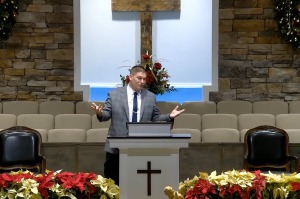Museum of the Bible returns 1,000-year-old handwritten Gospel manuscript to Greek Monastery
Bulgarian forces absconded with the manuscript in 1917 during World War I

The Museum of the Bible in Washington, D.C., has returned a handwritten Gospel manuscript, which is more than 1,000 years old and was looted from a monastery by Bulgarian troops in 1917, to the Greek Orthodox Church.
MOTB curator Brian Hyland identified the manuscript, one of the world’s oldest hand-lettered Gospels, as part of hundreds of priceless objects looted from the Kosinitza Monastery in Greece during World War I, the museum said in a statement, adding that they had purchased it at a Christie’s auction in 2011.
A formal return ceremony will be held at the monastery in northern Greece on Monday, the MOTB said.
The manuscript had been used for hundreds of years in religious services, along with more than 400 volumes, before being taken by Bulgarian forces, ARTnews said.
In 2020, the museum informed Ecumenical Patriarch Bartholomew I, the world leader of the Eastern Orthodox Church, about the intended return of the manuscript, which entered the museum’s collection in 2014. The Patriarch then allowed the museum to display the manuscript from October 2021 onwards.
The patriarch also loaned three more manuscripts “as part of the collaboration in a permanent exhibit at the museum as a gesture of gratitude for the Gospel manuscript’s return,” the museum said.
MOBT, which has investigated all of its collections in recent years, said it “hopes that other collections in the U.S. that also possess manuscripts from the monastery will likewise voluntarily return them to their rightful home.”
“Certainly the marketplace has its challenges,” the museum's chief curatorial officer, Jeffrey Kloha, told The New York Times. “Things have been moving in the market for some time, and in some cases decades, that have origins that are not legal.”
He added, “The procedures in place now are very, very tight. If we don’t have every detail filled in, it’s simply not considered. The process is very different than it was 10 years ago.”
Last February, the MOBT transferred control of 5,000 disputed manuscripts and bits of papyrus to the U.S. government, which then repatriated the artifacts to Egypt, from where the items were thought to have been illegally shipped during the Arab Spring.
The artifacts included manuscript fragments, funeral masks, parts of coffins and the heads of statues.
In April 2020, an academic from the U.K.’s Oxford University was arrested as part of an investigation into the theft and unauthorized sale of ancient Bible fragments to Hobby Lobby Stores.
The accused, identified as Dr. Dirk Obbink, a professor of papyrology at Oxford, allegedly stole the fragments belonging to the Oxyrhynchus collection in the Sackler Library. The Oxyrhynchus Papyri is a group of manuscripts that were discovered during the late 19th century and early 20th century at a spot where ancient inhabitants of the city of Oxyrhynchus dumped their garbage.





























